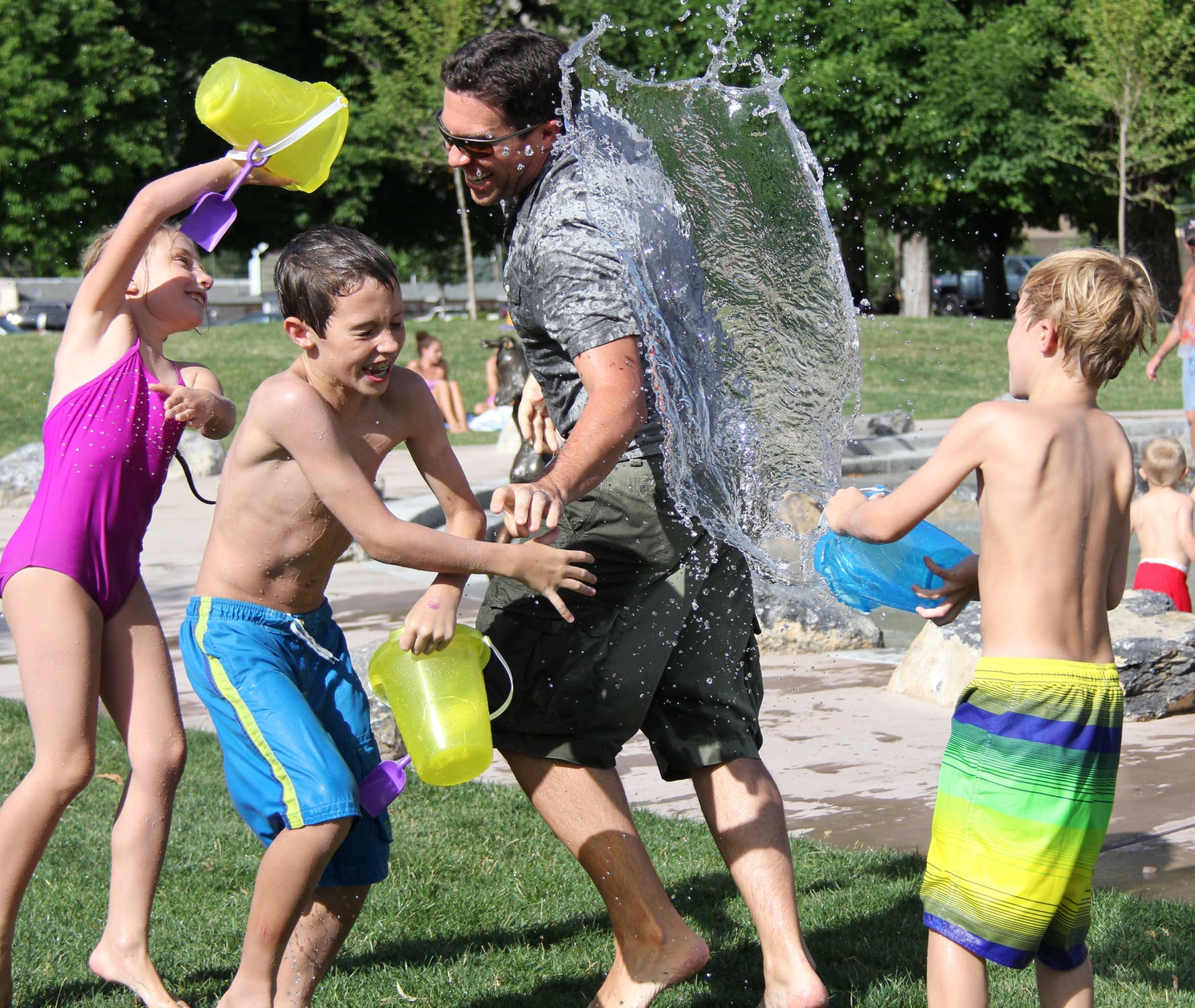All About Pool Safety
For many families, some of the most anticipated summertime activities happen around the pool. But before you dive into the fun, be sure you and your family know the many ways to practice pool safety.
Sun safety
Sunburns can cause a lot more than just an embarrassing red appearance on the skin; they can be the source of severe pain, fever and even dehydration. In fact, just one sunburn during childhood can increase the risk of developing skin cancer. According to the American Academy of Dermatology, multiple events of extreme sunburn for individuals age 18 and younger can contribute to the development of melanoma.
The sun’s harsh rays can also affect your appearance later in life, causing premature aging and wrinkling of the skin. For babies 6 months of age or younger, keep their sensitive skin out of sunlight completely. For all other ages, here are the do’s and don’ts for playing in the sun:
- Do dress your baby in protective clothing
- Always cover baby’s arms and legs in airy, light-colored garments. Dark colors absorb heat, while lighter hues reflect it, keeping baby cooler.
- Look for shirts and swimwear made from sun-protective fabrics. These garments are especially great if your kids spend a lot of time outdoors in the summer.
- Choose a wide-brimmed hat or ball cap and sunglasses to protect your baby’s eyes.
- Don’t forget the sunscreen!
- The Food & Drug Administration (FDA) recommends that you avoid applying sunscreen on infants younger than 6 months.
- Individuals with sensitive skin should seek a hypoallergenic, chemical-free formula with zinc oxide or titanium oxide with an SPF of 15 or higher. If you use a chemical-based sunscreen, always test on a patch of skin first.
- Apply sunscreen at least every 2 hours and pay attention to the product’s expiration date as the active ingredients can lose their effectiveness over time.
Water safety
Once your skin is properly protected, it’s almost time to jump in. But before you do, make sure the water is clean and ready.
- Do test the water daily
- Whether your pool uses traditional chlorine or is equipped with a salt chlorine generator, make testing it a top priority, especially when your pool is used frequently.
- Make sure to read and follow the product label instructions closely when dealing with pool chemicals. Proper dosing of pool chemicals is important for swimmer comfort.
- Always test the water and make sure the free chlorine level never falls below 1 parts per million (ppm). Chlorine is the main sanitizer of your pool (and drinking water), and the more people in your pool, the more chlorine you may need.
- Don’t assume “salt water” pools are better or easier
- What people call “salt water” pools are still chlorine pools; the salt chlorine generator just makes chlorine on-site.
- Both traditional chlorine and “salt water” pools contain chlorine.
- Some people believe pools with salt chlorine generators are maintenance free — but this is untrue, and neglecting things can lead to pool problems.
- No matter what kind of pool you have, it needs to be tested every day.
- Tips for keeping water balanced
- If your eyes are irritated and the pool water is cloudy or looks green — the balance is probably off.
- Here’s how to test:
- Use strips that show chlorine, alkalinity, pH and cyanuric acid levels.
- Follow instructions on the package for how to submerge the strip.
- Compare color readings on the strip to the range on the product bottle.
- Ideal water balance ranges:
Chlorine: 1–4 ppm Alkalinity: 80–120 ppm
pH: 7.2–7.6 Cyanuric Acid: 20–50 ppm

Practice swim safety this summer
Swimming is a lot of fun, but drowning is a real danger. In fact, the Centers for Disease Control and Prevention (CDC) reveals that drowning is the second most common cause of accidental deaths among kids. As an advocate for swim safety, Olympic gold medal winner and mom, Janet Evans, offers these tips to keep kids safe this summer:
Enroll in swimming lessons. Many people lack basic swimming skills, and enrolling children in swimming lessons at a young age will help reduce the risk of accidents and drowning.
Don’t allow children to swim alone. Drowning is silent, and it happens quickly. Always have a responsible adult watching while children are either in or out of the pool.
Keep pool areas tidy. Cleaning up pool toys after play can help lessen the temptation of children to enter the pool area unsupervised.
For more information on Janet Evans, visit www.janetevans.com.
3 facts about “salt water” pools
While there are plenty of options available for pool owners, there are many opinions about pools equipped with salt chlorine generators and traditional chlorine pools. Check out these facts to learn more, and to decide which best fits your family’s needs:

- In a “salt water” pool, chlorine is produced by a salt chlorine generator rather than adding chlorine to the pool directly. A “salt water” pool is still being sanitized by chlorine. So, a “salt water” pool is a chlorine pool.
- The same amount of chlorine is required to maintain a “salt water” pool as a traditional chlorine pool.
- “Salt water” pools require the same maintenance functions and still must be checked and balanced regularly, just like a traditional chlorine pool.
To learn more, visit www.SaltorChlorine.org.
Photo courtesy of Getty Images (woman and child in pool)




